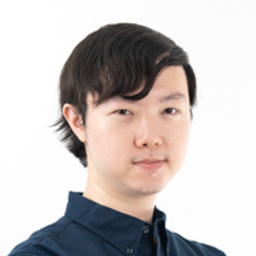Mindef to improve mental health of servicemen, increase NSF allowance by $35 to $75


 PUBLISHED ONMarch 03, 2025 4:56 AMByKhoo Yi-Hang
PUBLISHED ONMarch 03, 2025 4:56 AMByKhoo Yi-HangThe Ministry of Defence (Mindef) aims to improve the psychological well-being of servicemen as they have done so in past years, Senior Minister of State for Defence Heng Chee How said during the Committee of Supply (COS) in Parliament on Monday (Mar 3).
Mindef's budget for the financial year 2025 is projected to be $23.4 billion, a 12.4 per cent increase from the $20.2 billion last year.
Senior Minister Heng shared that Mindef piloted the deployment of roving care teams last year which consisted of psychologists and counsellors that were partnered with unit commanders to enhance care for servicemen after basic military training (BMT).
BMT is an initiation to the army and rite of passage every full-time National Serviceman (NSF) must go through, and also teaches basic soldiering skills.
The ministry's Mental Health Office also ran a well-being campaign in 2024 to foster a positive workplace culture across Mindef and the Singapore Armed Forces (SAF).
An e-learning module for mental health was also launched last year to provide servicemen with the know-how to build a positive workplace culture and support peers.
The SAF also established the Army Resilience Centre (AReC) in March last year, which works alongside training centres and units in "implementing structured resilience-training curriculum" and reworking training programmes to "bolster servicemen’s mental resilience and adjustment to military life".
Higher training participation and improved ability to cope with challenging tasks during military training has since been reported in BMT after implementation, Heng said.
Responding to Workers' Party Member of Parliament Gerald Giam's views on National Service (NS) being "value-accretive", Heng stated: "We fully recognise and value our NSFs' contributions to the defence of this country."
He explained that this allowance receives regular reviews, and the last adjustment was made in July 2023 when allowances were increased by $125 to $200 depending on the serviceman's rank and vocation.
Come July 1, NSF monthly allowance will increase between $35 and $75, Heng said.
This increase is about a four to five per cent increment for most NSFs, and will equate to a monthly allowance of $790 to $1,955, depending on rank and vocation.
This year's allowance review will be the fourth adjustment over the last 10 years.
Providing an update to the medical classification system redesign that he had previously mentioned in 2021, Heng explained that the new classification system will move away from the binary classification of "combat fit" or "non-combat fit".
This new system aims to better characterise each serviceman's medical fitness and functional capacity, so that they can be matched to more operationally effective roles, Minister Heng said.
Since 2022, about 300 pre-enlistees underwent functional assessments and two-thirds were found to contribute more effectively over a wider range of roles, he said.
"This is heartening because it opens up more deployment options for our servicemen," he added. "It also allows the country as a whole to make best use of as many of our servicemen as possible in the defence of our nation."
Citing a study by the Kyiv School of Economics, Defence Minister Ng Eng Hen raised the increasing importance of drones in modern warfare – Ukraine is capable of producing four million drones annually, he said.
Aside from providing intelligence and support, these drones can also be used for strike operations, decoy, signal relay and more, Minister Ng stated.
It is due to this importance that the Air Force has established the Unmanned Aerial Systems (UAS) Warfare and Tactics Centre.
This centre will drive development of UAS warfare and how they can integrate with the other SAF forces for operations.
The SAF will also build counter-UAS capabilities via a newly-established SAF Counter-UAS Development and Operations group to detect and neutralise smaller UASs, adding to the existing Island Air Defence’s capabilities.
Minister Ng stressed that he does not want to "give the wrong impression that it's so easy... to deal with all unmanned aerial systems", highlighting that small drones are hard to detect and that there is an "asymmetry of costs" in dealing with them.
"I do not want to give the impression that it’s easy and that there are comprehensive solutions to deal with all UASs. Small drones are, in fact, hard to detect. There is also the asymmetry of costs.
"If the aggressor fires 100 drones, they will cost about $15 million, but to defend against them would cost nearly $250 million – clearly unsustainable," Ng said.
"This challenge is currently a focus of intense efforts everywhere, everyone is trying to find a cost-effective solution to the problem of mass small drones used for attack."
The Digital and Intelligence Service, formed in 2022, now has two new commands, Minister Ng announced.
The SAF C4 and Digitalisation Command (SAFC4DC) comes alongside two centres – the Digital Ops-Tech Centre and the new SAF Artificial Intelligence (AI) Centre, which aim to fully utilise new digital hardware and software for the SAF.
Additionally, the Defence Cyber Command aims to consolidate all cybersecurity operations and capabilities to strengthen national cyber defence.
"The [new] command will have to deal with hostile digital threats against Singapore from state and non-state actors... if anyone attacks our digital backbone, our essential services will be crippled, and it's obvious that as a small geographic entity, we are vulnerable," Ng shared.
Ng also said that the SAF plans to procure two more submarines, bringing the current fleet total up to six.
At present, Singapore has two German custom-made Invincible-class submarines plying our waters, with two more joining the fleet around 2028.
He clarified that the four submarines that Singapore would have is insufficient, considering downtime due to maintenance cycles.
Ng added that a total of six would be a "steady state" for Singapore's submarine fleet.
For more on Budget 2025, visit our microsite.
For more original AsiaOne articles, visit here.